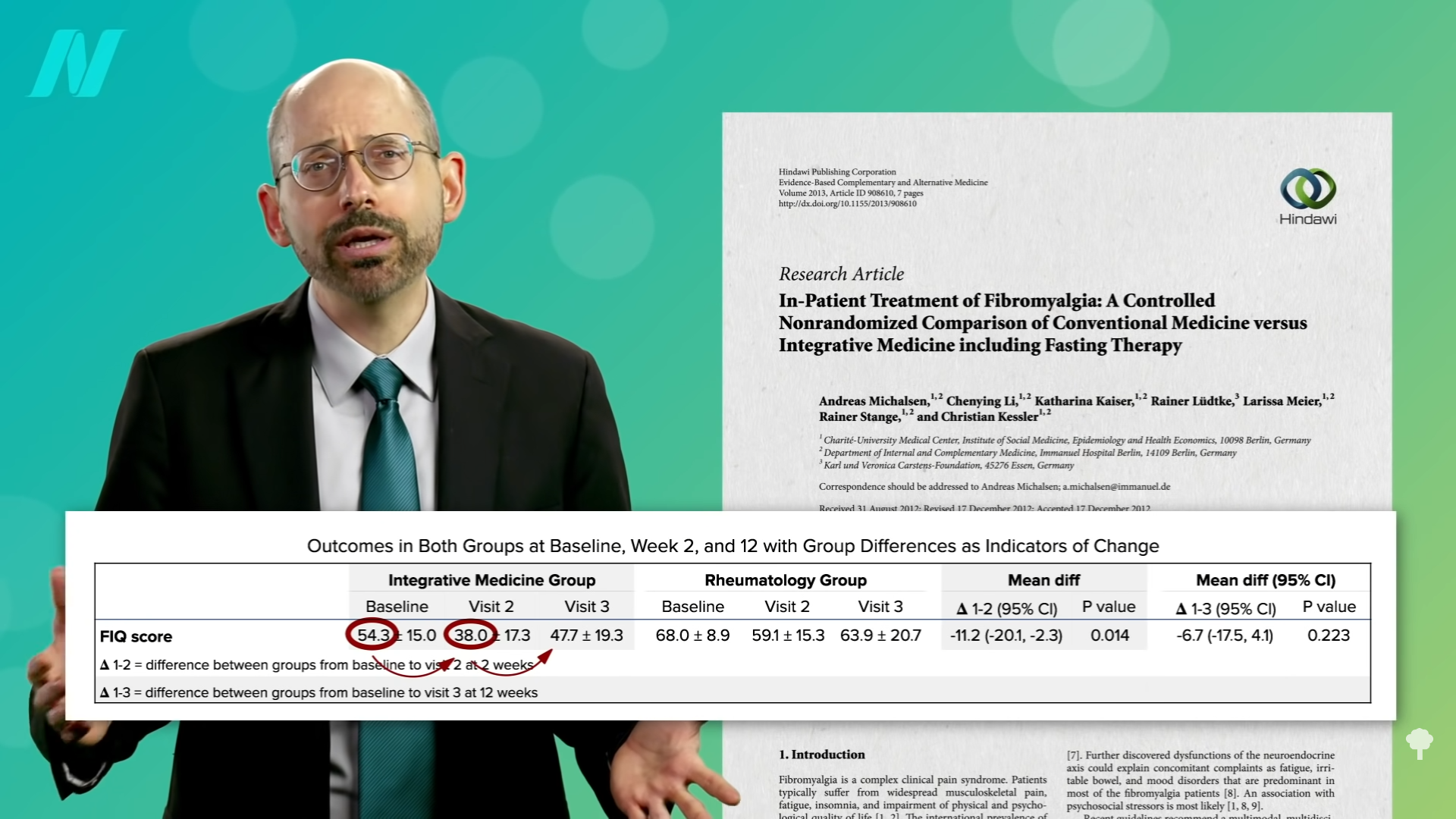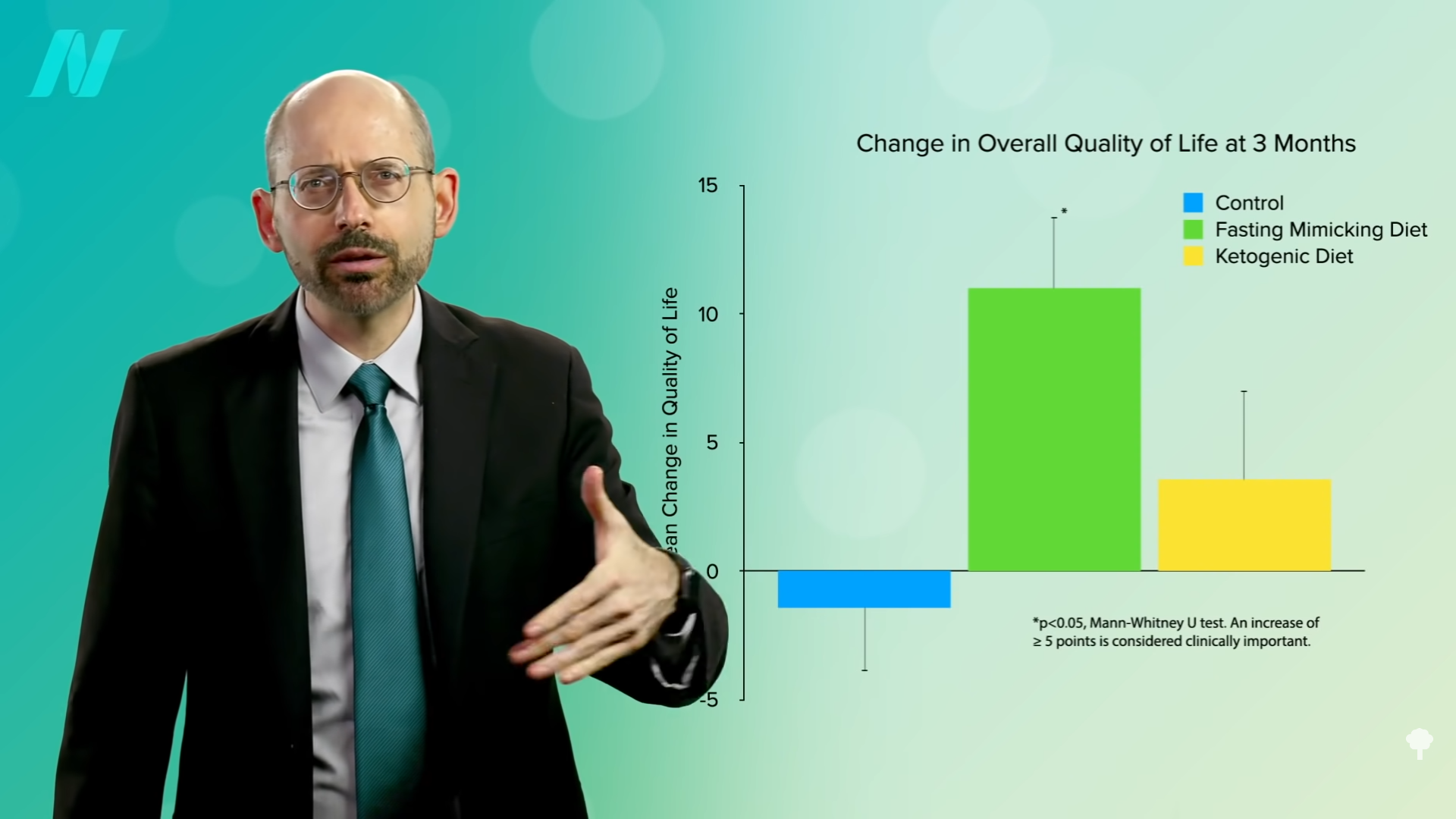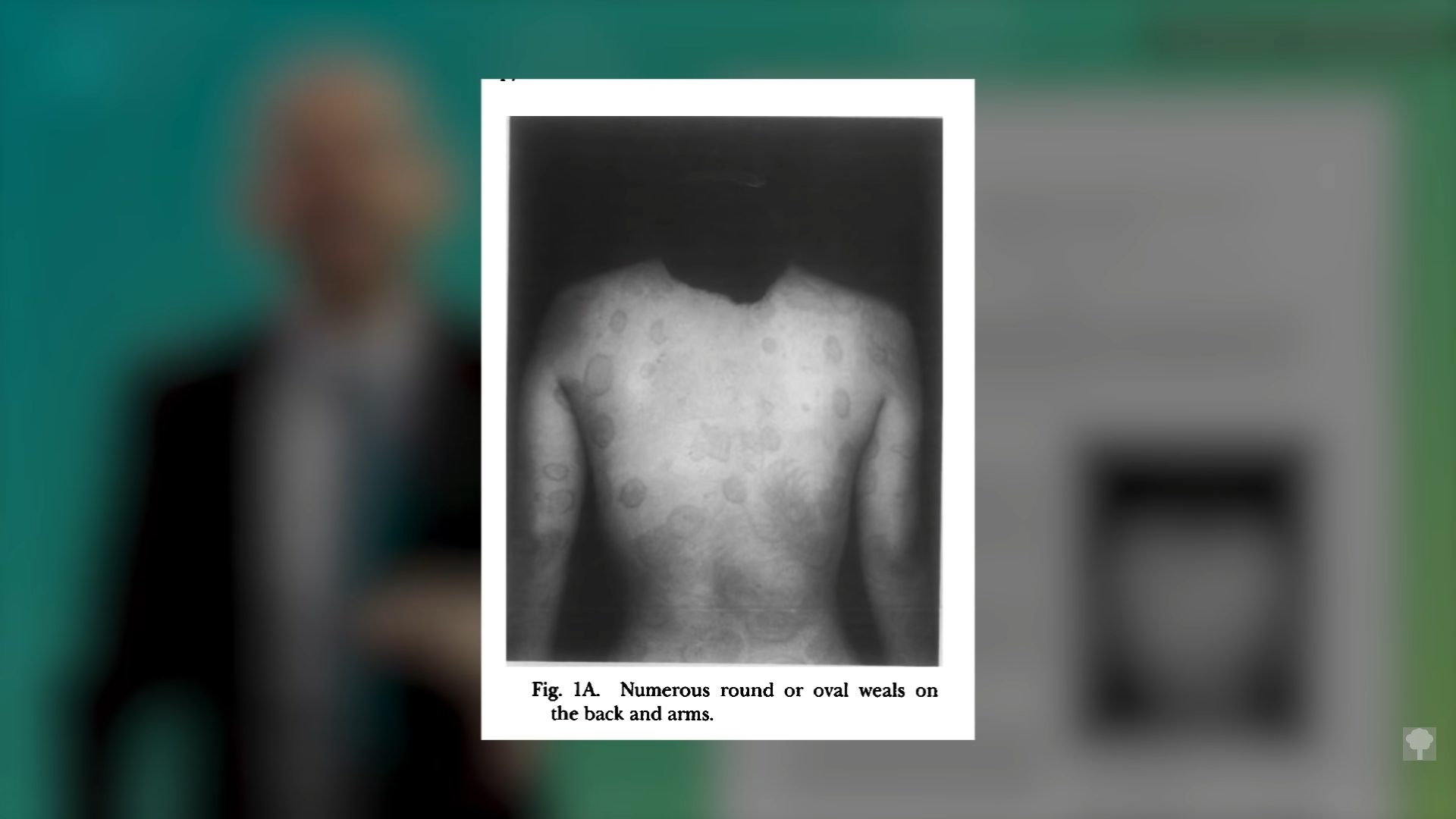Various fasting regimens have been attempted for inflammatory autoimmune diseases, such as lupus, ankylosing spondylitis, chronic urticaria, mixed connective-tissue disease, glomerulonephritis, and multiple sclerosis, as well as osteoarthritis and fibromyalgia.
The strongest evidence of the benefits of fasting surrounds the treatment of rheumatoid arthritis, an autoimmune joint disease, as I detailed in my previous blog post. A German study suggested benefits for osteoarthritis, too, and reported improvements in pain and joint function, but we’d really need randomized controlled studies to know for sure. The researchers despaired they only had 30 patients, but that’s 30 times more than many reports on fasting in the medical literature, which may detail only single cases.
One woman, for example, with a rare autoimmune disease known as mixed connective-tissue disease, which can cause all sorts of painful and distressing symptoms, was treated with steroids in an attempt to suppress her immune system. After 21 days of fasting, and off her medications, “she had no further complaints.” More importantly, her symptoms seemed to stay away, and “she remained free of medication.” So, does fasting work for mixed connective tissue disease? All we can say is that it worked at least once.
A similar success story was reported with fibromyalgia. A woman with pain throughout her body, who couldn’t sustain activity and was on a lot of drugs, became “symptom-free” after a 24-day fast and remained that way at her “follow-up visit 1 month later.” However, when a modified fasting regimen was tried on dozens of individuals, the benefits seen at week 2 largely disappeared by week 12, as shown below and at 1:32 in my video Fasting for Autoimmune Diseases.

What about lupus? A 45-year-old woman who had remained in pain despite taking immunosuppressive drugs was pain-free by day four of fasting and remained symptom-free for one year when her symptoms began to recur, but she wiped them out again with a second seven-day fast, “after which she had no symptoms.” Note, though, that she didn’t only fast. She water-only fasted, then followed it with a plant-based diet in an attempt to solidify the gains. On its own, a strictly plant-based diet without any animal protein has been shown to control symptoms in at least some cases.
The same with sacroiliitis, a common manifestation of ankylosing spondylitis, an autoimmune arthritis that primarily affects the spine, causing back pain that can last for years. In the case of a 33-year-old man, all sorts of conventional therapies and drugs were tried, but the pain wouldn’t go away. So, the complete avoidance of animal foods was recommended, and “the complaints improved distinctly and persistently” within days—until the patient ate meat again. Once again, back on plant-based nutrition, he was off most of his drugs and almost completely free of symptoms. So, at least in this case, inflammatory pain refractory to other treatments was abolished by eating more healthfully. At least it’s worth a try!
Autoimmune glomerulonephritis, where your body attacks your own kidneys, is a common manifestation of lupus. In a case series, 29 patients were fasted for 60 hours, then had only fruits and vegetables until they got better. They described such remarkable recoveries that fasting, in their opinion, “should be an essential part of treatment.”
What about multiple sclerosis, an autoimmune nerve disease? Individuals with MS were randomized to a “fasting-mimicking diet”—in this case, a modified fast that started out with an 800-calorie-a-day diet of fruit, rice, or potatoes, followed by a week sipping a few hundred calories of flaxseed oil and vegetable broth, then transitioning to a plant-based Mediterranean diet. Over the next three months, they experienced a significant improvement in overall quality of life. They also tried a ketogenic diet, but that failed to offer clinically or statistically significant overall benefit, as you can see below and at 3:34 in my video.

And, finally, let’s look at chronic urticaria (hives), where you get a rash of itchy weals and welts, as seen here and at 3:40 in my video. Individuals started to improve on day 3 of the fast, and their hives completely disappeared by day 11. This is consistent with studies from Germany and Japan that evidently showed around 75 percent effectiveness for such patients with what looks like some sort of tea with sugar diet. It’s certainly worth giving fasting therapy a try, but, of course, fasting should only be done under trained medical supervision. Otherwise, you’d never know if you have some hidden underlying kidney issue that could land you in a coma, then maybe in the morgue. You have to have your kidney function and electrolytes monitored to make sure your body is up for the challenge.

“Despite the possible good outcomes, water-only fasting is not a cure or treatment in the traditional sense; it is simply intended to promote the body’s self-healing mechanisms.” Since fasting is unsustainable, by definition, “to maintain the results obtained by water-only fasting, it is necessary to adhere to a health-promoting lifestyle that includes a diet of minimally processed plant foods, adequate sleep, and robust physical exercise.”
If you haven’t seen it yet, check out my related video Fasting for Rheumatoid Arthritis.
I’ve held three webinars on fasting. All of the videos are available for free on NutritionFacts.org, but you can also get them in a digital download—as a bundle or separately. See:
To see all of the fasting videos currently on the site, please visit our fasting topic page.
Interested in more on using diet to prevent and treat autoimmune diseases? Check out the related posts below.

